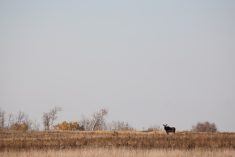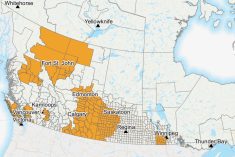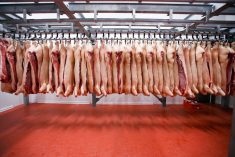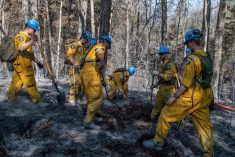The discovery of chronic wasting disease in deer in northwestern Montana has officials in CWD-free British Columbia tightening their testing net.
The province on Wednesday announced a mandatory sampling program, in which hunters must submit heads from mule deer and white-tailed deer harvested in wildlife management units 4-1, 4-2, 4-3, 4-4, 4-5, 4-6 and 4-7 along the province’s southern border, in the Kootenay region.
The requirement is in place for deer harvested in those WMUs between Sept. 1 and Nov. 30 this year. Heads must be deposited within one week of harvest at one of the freezers listed on the B.C. government’s CWD web page or at any B.C. Wildlife or Conservation Service office during business hours.
Read Also

U.S. livestock: Cattle strength continues
Cattle futures on the Chicago Mercantile Exchange were stronger on Friday, hitting fresh highs to end the week.
B.C. imposed the new mandatory sampling program after the confirmation in June of nine white-tailed deer with CWD at Libby, Montana, about 125 km southeast of Creston, B.C.
The discovery by Montana Fish, Wildlife and Parks officials marks the first time CWD has been detected west of the Rocky Mountains, B.C. government officials said in a release Wednesday.
“The discovery raises concerns about infected deer making their way into B.C., as Libby is within the range of deer movements between B.C. and Montana,” the province said.
The province, which has yet to find a case of CWD, has been monitoring for it since 2002 — particularly in its Peace and East Kootenay regions, due to the disease’s presence in both Alberta and Montana.
Over 3,900 cervids have been tested in B.C. for CWD since 2002, the province said, but sample numbers in recent years “have not consistently provided confidence in disease absence in the province.”
More sampling is needed to confirm the province’s CWD-free status and “inform any additional response,” the province said Wednesday.
Along with the mandatory sampling program the provincial Wildlife Health Program is urging hunters in other parts of the province — especially the Peace region — to bring deer, moose and elk heads to drop-off locations for testing.
In Saskatchewan, where the disease showed up in game farm animals in 1996 and is now found in deer, elk and moose in 48 of its 83 wildlife management zones, the province is also calling for more samples this fall from five specific WMZs.
The province on Tuesday said hunters who harvest mule deer and white-tailed deer in zones 9 and 10 (between Swift Current, Leader and Maple Creek) and 2W (south of Shaunavon) in the province’s far southwest, and zones 35 (between Moosomin and Esterhazy) and 37 (east of Yorkton, Melville and Canora) along the Manitoba boundary, are “strongly urged” to submit heads for testing.
Saskatchewan’s environment ministry said it hopes to collect at least 300 samples from each targeted zone “to more accurately assess changes in the disease and help guide future management options.”
CWD is a member of the transmissible spongiform encephalopathy (TSE) family of diseases such as BSE in cattle, scrapie in sheep and Creutzfeldt-Jakob disease in people.
Evidence suggests CWD prions can pass from animal to animal by direct contact or through contaminated feed, soil, and/or water sources with saliva, urine and/or feces from infected animals.
No evidence has yet shown CWD can affect humans, but the World Health Organization and other such bodies recommend against eating meat or consuming any products from animals known to be infected with any TSE disease.
CWD-infected deer and elk show abnormal behaviour accompanied by progressive weight loss. In later stages, animals with CWD show signs of extreme weight loss, repetitive behaviour, drowsiness, lack of co-ordination, drooping head and ears, drooling and increased drinking and urination. — Glacier FarmMedia Network




















